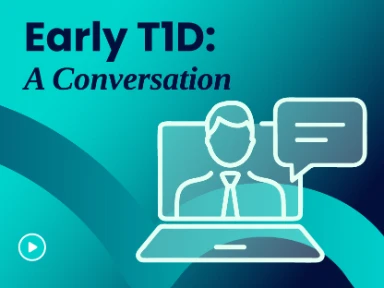- Resource
- BR1DGE
- Staging
- Video
What Are the Benefits of Screening?
People identified early through screening programs have milder disease and better quality of life compared to control
Learning Objectives
- Discuss the benefits of T1D screening programs

Summary
The onset of T1D is not the metabolic disease, but Stage 1. So, you may ask, ‘can I screen and diagnose when this disease starts, at the onset of this disease and how would I do it?’ And then you go to your regulators, to your ministry and say, ‘listen, I would like to start a screening program to start screening for the onset of T1D’. And then they ask you, ‘yeah, what is the benefit to do this screening for asymptomatic disease?’
And when we started the Fr1da study in 2015 as a first public health screening program for islet antibodies for early-stage T1D. We also, from our ministry heard you have to make sure that you can show the benefits. And on this slide, you see some of the benefits of early detection, namely people who are diagnosed with the metabolic part of the disease when they already knew this by being screened before they had a much better HbA1c at the metabolic onset of Stage 3 diabetes. They had lower fasting glucose, they had still more beta cells preserved, a higher C-peptide and they almost had no symptoms and did not lose weight, just indicating that they were diagnosed at the right time and insulin was started at the right time.
Also, life quality was higher because when we compared them to those who had not participated in screening programs, and you see them, I have no pointer on the left side, these were our registry children. They had a higher stress score, both fathers and mothers of those children compared to those participating in the screening, at the screening and in the long-term follow-up that were similar to those controlled population healthy children of their age.
And then we looked also at the societal impact, and of benefit of screenings. And if you model that 90% of your population would really take place at the screening and you would start now in your country to screen that. You could predict that after 20 years you have significantly reduced DKA rates in those children. And that was also seen on a patient level I didn't mention that was only 2% eightfold decrease. Then we would also see a decrease in symptoms, a reduction in days in the hospital and, much fewer children that have weight loss and symptoms and start this disease really in a stress situation, maybe even in intensive care.
MAT-GLB-2407785-2.0 - 09/2025



